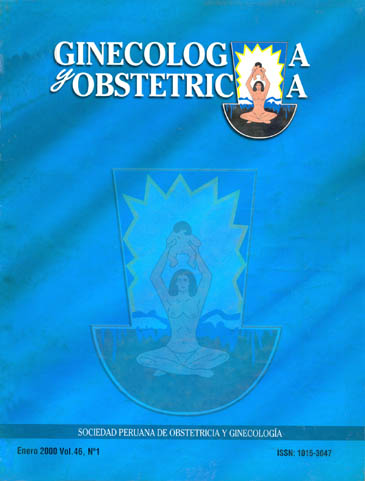Adverse effects of blood transfusion in obstetric hemorrhagic shock origin.
DOI:
https://doi.org/10.31403/rpgo.v46i1386Abstract
OBJECTIVE To examine the need for blood transfusion in cases of obstetric hemorrhagic shock origin in Maria Auxiliadora Hospital patients and determine the frequency of some adverse effects. METHODS: descriptive cross-sectional epidemiological investigation, to which the files of the departments of obstetrics and gynecology and clinical and Blood Bank January 1, 1994 to December 31, 1998. It was pointed Laboratory examined the total of births attended, the frequency hemorrhagic disease in obstetric patients and the frequency of hemorrhagic shock according to the pathology encountered. Also the number of blood transfusions performed and complications were determined it said. RESULTS: A total of 28 151 births, 6537 abortions, ectopic pregnancies and 111 186 hydatidiform moles, 136 cases of hemorrhagic shock (0.48% of all births) was found. The main causes of hemorrhagic shock were the conditions in the first quarter, the most important ectopic pregnancy. Blood transfusion was performed in 73% of cases of hemorrhagic shock and generally occurred without complications, having found five cases of adverse effects: fever and allergic reaction 2% 2% and formation of small clots forming 1%. CONCLUSION: Hemorrhagic shock of obstetric origin is still a high frequency in the Maria Auxiliadora Hospital and its most common cause is the pathology of the first trimester of pregnancy. Just over two thirds of cases of hemorrhagic shock required a transfusion and the presence of adverse effects was relatively low.Downloads
Download data is not yet available.
Downloads
Published
2015-07-16
How to Cite
Távara, L., Estancio, C., Chumbe, O., Vega, L., & Orderique, L. (2015). Adverse effects of blood transfusion in obstetric hemorrhagic shock origin. The Peruvian Journal of Gynecology and Obstetrics, 46(1), 47–52. https://doi.org/10.31403/rpgo.v46i1386
Issue
Section
Artículos Originales
















